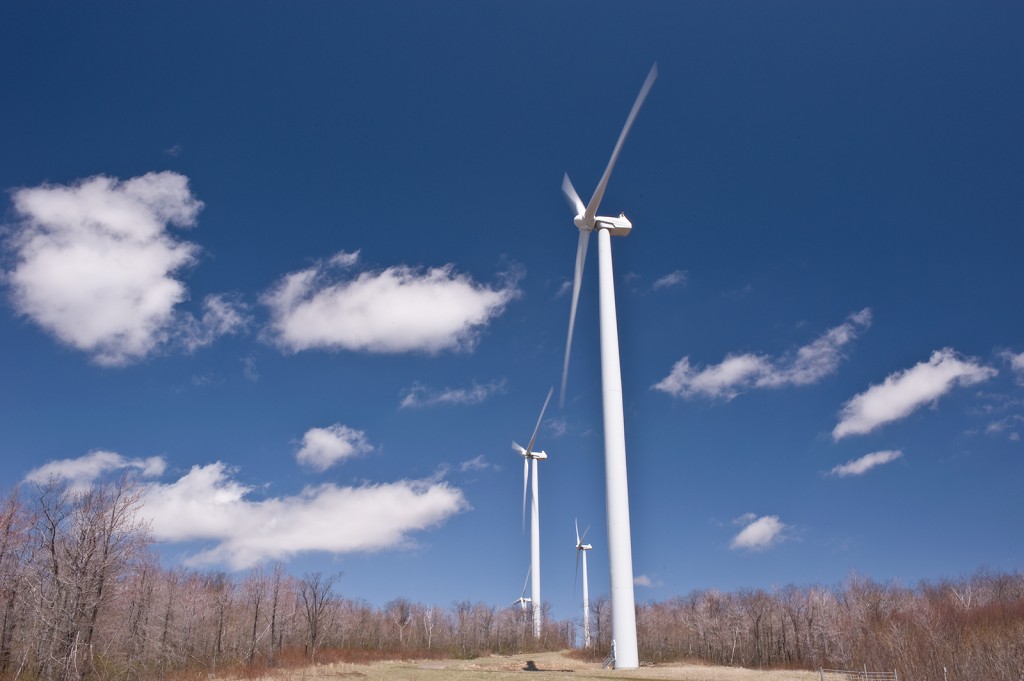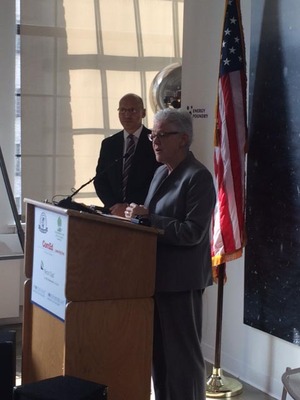A New Effort to Save the Ozone Layer and Protect the Climate
By Ernest Moniz and Gina McCarthy
As world leaders gathered at the United Nations this week, the Obama administration and global partners today announced several unprecedented steps to secure an ambitious amendment to the Montreal Protocol. This successful global agreement is already putting Earth’s fragile ozone layer back on track to full restoration. But an ambitious amendment would dramatically cut down on the usage of damaging greenhouse gases known as hydrofluorocarbons or HFCs.
HFCs are commonly used in air conditioning and refrigeration applications around the world. They can be hundreds to thousands of times more potent than carbon dioxide and their emissions are increasing by 10 to 15 percent on an annual basis globally. That’s why we must continue working to replace HFCs with more climate-friendly alternatives. And an amendment to the Montreal Protocol is the best way to do that.
Last year, global leaders agreed to “work within the Montreal Protocol to an HFC amendment in 2016.” Coming to an agreement among nearly 200 countries is never easy, and considerable differences still need to be bridged. But we’re confident that an amendment will be reached during final negotiations at the next Montreal Protocol conference in Rwanda next month.
Today’s announcements include four main components that will help ensure a strong outcome during the conference:
- One: Including an appropriate “early freeze date,” when production and consumption of HFC refrigerants must stop increasing in so-called Article 5 countries (i.e., those in need of assistance). During an event in New York this morning, ministers representing more than 100 countries rallied behind an ambitious amendment with an “early freeze date.”
- Two: 16 donor countries and philanthropists announced their intent to provide $80 million in fast start support to Article 5 countries. $27 million in funding from donor countries is being offered to help Article 5 countries jump-start their efforts to design and implement programs that reduce HFCs. It will be provided as long as an ambitious amendment with a sufficiently early freeze date is adopted this year. Meanwhile, $53 million from philanthropists will help countries maximize economic benefits during this transition through various energy efficiency programs. This is the largest-ever package of fast-start philanthropic support for boosting the energy efficiency of appliances and equipment. The Energy Department’s Lawrence Berkeley National Laboratory estimates that a 30 percent improvement in air conditioner efficiency can double the climate benefits of an amendment. DOE has long invested in research and development, as well as standards to improve energy efficiency, including in the air conditioning sector where transitioning to HFC alternatives is important. For example, our Super-Efficient Equipment and Appliance Deployment (SEAD) initiative of the Clean Energy Ministerial partners with governments to spur efficiency policies and programs that yield billions of dollars in consumer savings while cutting carbon pollution. Today’s announcements will super-size this work, bolstering the confidence of all countries that they can cut energy costs as they phase down HFCs.
- Three: Today, the Energy Department also published a report with the results of a testing program to evaluate the performance of HFC alternatives in hot climates. This is important because some countries have raised questions about whether HFC alternatives can perform as well as current refrigerants in those conditions. Today’s new results demonstrate that HFC alternatives can perform just as well as current refrigerants even under the harshest conditions. In fact, they sometimes perform even better. Today’s report focuses on rooftop air conditioning units that are popular in countries such as Saudi Arabia, but a similar testing program in 2015 that focused on mini-split air conditioning units came to the same conclusion. In both cases, the testing program was conducted at Oak Ridge National Laboratory and guided by an international panel of technical experts from a broad and diverse set of countries.
- Four: To round out the announcements today, hundreds of companies and sub-national governments – represented through associations or individually – voiced support for an ambitious amendment. That list of supporters includes major global firms that rely on air conditioning and refrigeration in their operations like 3M, Dell, Microsoft, Nike, Red Bull, Symantec, and Unilever, and it demonstrates that there is a strong coalition of stakeholders seeking a strong outcome in Rwanda next month.
In addition to taking these steps, we look forward to advancing our joint collaboration on the Energy Star program. For more than two decades, this program has helped American citizens and businesses learn more about energy-efficient products that reduce greenhouse gas emissions.
We also look forward to continuing to work with our international partners as we take a giant step toward meeting the goals of the historic Paris Agreement. And we will push to secure the strongest possible HFC amendment next month in Kigali.





